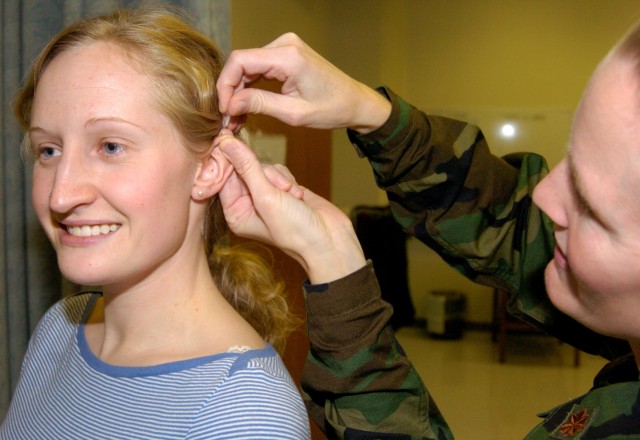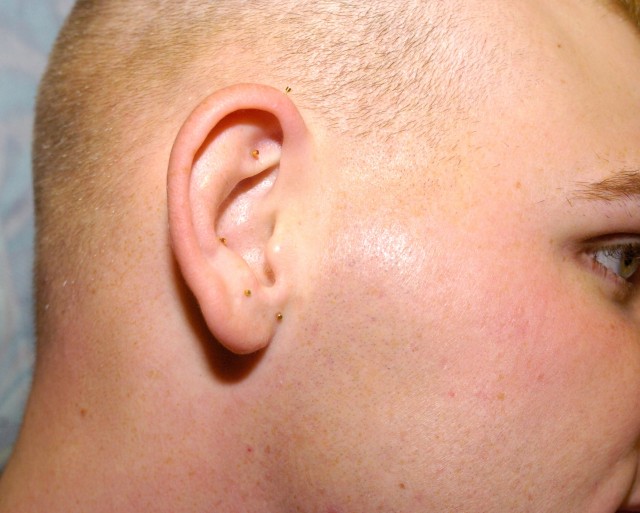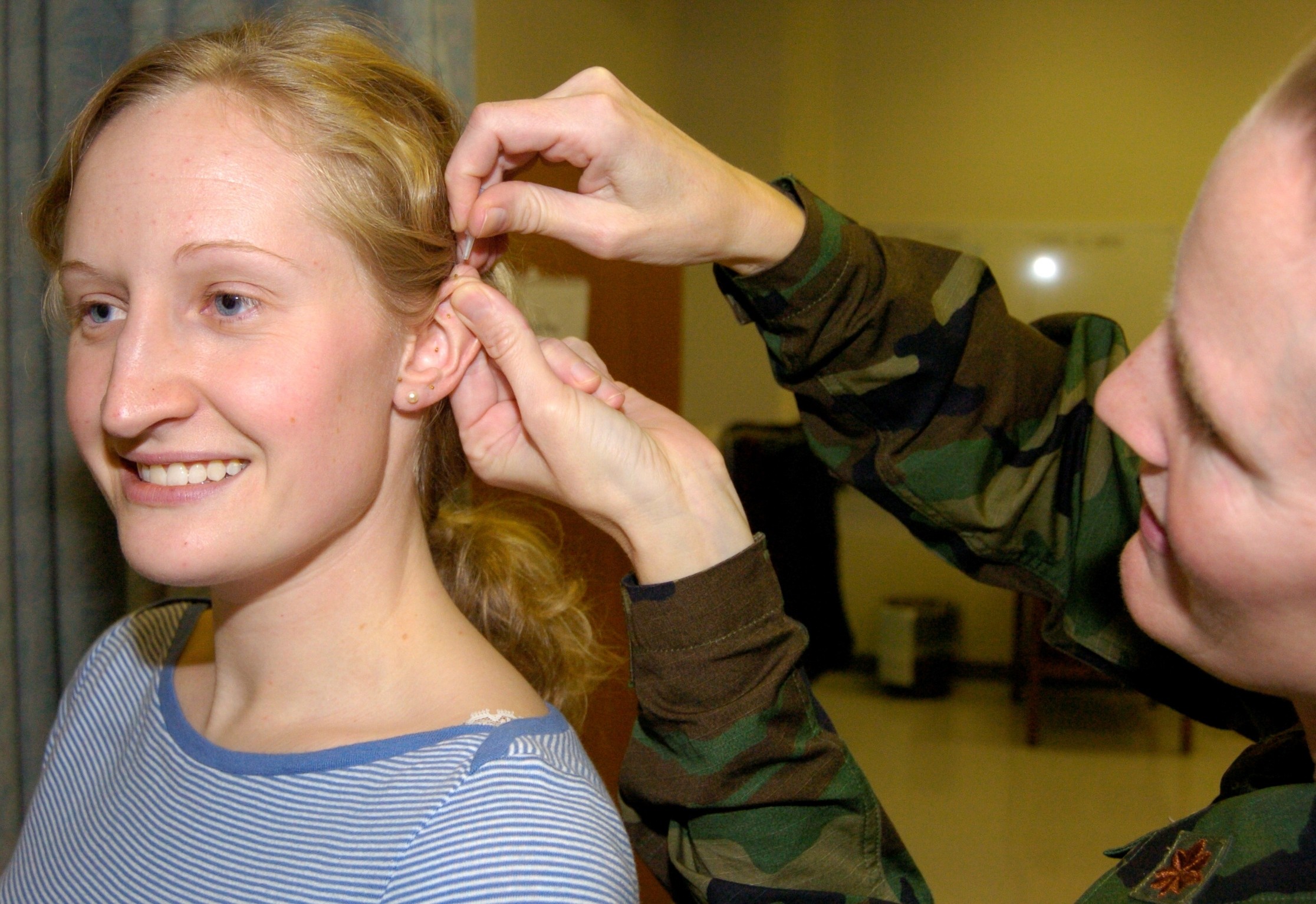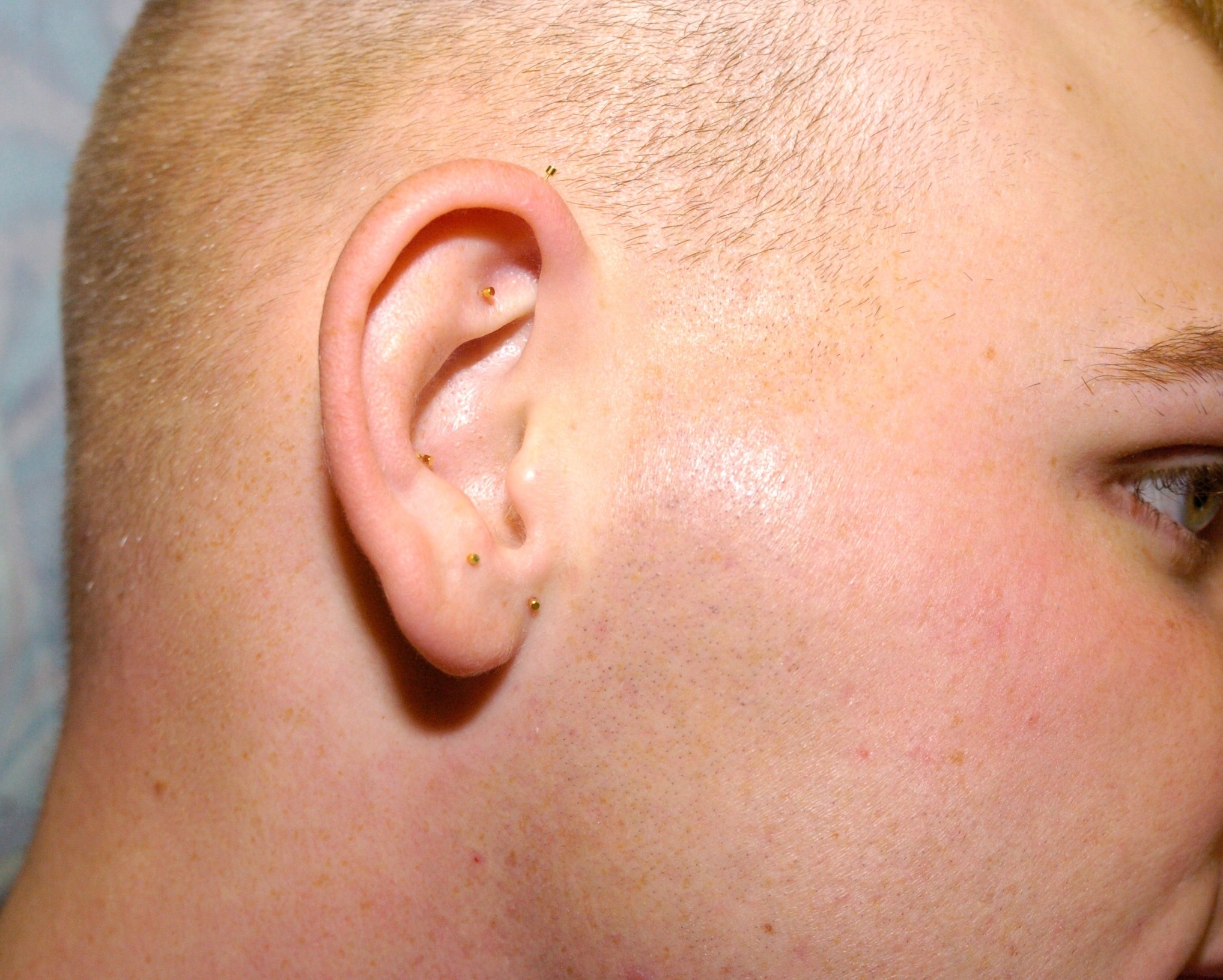A medical procedure dating back thousands of years was introduced to patients and medical staff recently at Landstuhl Regional Medical Center in Germany.
"Battlefield acupuncture" was introduced to LRMC doctors, who then applied the procedure to wounded servicemembers and local patients for pain relief, often with significant results.
Dr. (Maj.) Conner Nguyen was exposed to acupuncture as both patient and physician and was equally impressed in both roles. As a patient, Nguyen experienced a 25-percent increase in range of motion and a 50-percent reduction in chronic pain in his shoulders and upper back. As a pain specialist at LRMC, Nguyen recruited his most challenging patients, those for whom traditional pain treatment offered limited relief. Within minutes of when the short golden studs were inserted around their ears, many patients enjoyed a pain reduction of up to 75 percent, he said.
A reduction of 25 percent would be considered a success with traditional pain medications, said Nguyen. In one case, he said, a patient broke into tears when the severe pain he had been suffering for more than a year subsided within moments.
When the military practicioners who introduced battlefield acupuncture return to conduct the follow-up certification training required so LRMC doctors can practice acupuncture, Nguyen will be at the head of the line to get certified, he said.
"Acupuncture allows a provider like me to confidently complete a treatment and expect a good result within minutes," Nguyen said. Additionally, the procedure can be done with virtually no significant complications, and patients are subjected to little or no discomfort and can experience immediate and "quite spectacular results sometimes."
Nguyen received his interim hands-on training from Dr. (Col.) Stephen Burns and Dr. (Col.) Richard Niemtzow, two of the Department of Defense's 40 licensed acupuncturists.
Niemtzow developed and named the Battlefield Acupuncture technique in 2001. It is a radical departure from classical acupuncture, said Niemtzow, who realized its possible military value. As an Air Force acupuncturist, Niemtzow has trained hundreds of his military counterparts.
Battlefield acupuncture focuses on locations on the ear that he said have been known for hundreds of years as effective areas for pain control. The ear is a practical target for acupuncture because it can be readily accessed whether the patient is on the battlefield or in a hospital bed.
Acupuncture can also be a practical means for treating pain in the military, Niemtzow said, such as when a Soldier develops a migraine headache at the onset of a mission. Where pain medication could cloud his mind and compromise the mission, acupuncture can offer long-lasting relief within minutes.
Introducing acupuncture to doctors trained in traditional Western medicine often meets with raised eyebrows, but the reception is warming, he said.
"In the beginning many people were skeptical, but after seeing it demonstrated on patients and witnessing the immediate benefits - the majority of physicians embraced it and learned how to use it in their practices as an adjunctive therapy," said Niemtzow, who is the consultant for alternative and complimentary medicine to the Air Force Surgeon General.
The technique was readily received at LRMC, said Dr. (Col.) Stephen Princiotta, deputy commander for clinical services. "The doctors who saw it in action and heard about it have been very excited about the opportunity to add acupuncture as a therapy," he said.
Dr. (Maj.) Teri Simpson, an anesthesiologist, uses acupuncture "with great success" one day a week at the LRMC pain clinic.
"I love it," Simpson said. "It can be life changing when the patient responds immediately and looks at you like you're a magician."
In addition to using the small studs that resemble small pierced earrings, Simpson uses the longer needles more commonly associated with acupuncture. The frequency of application and the duration of relief vary with each patient, but treatment can progress from about two times a week to as little as once a month or longer. In some cases further acupuncture treatment may not be required.
Acupuncture doesn't work for all of Simpson's patients, she said. About 15 percent do not respond to acupuncture, but of the patients who do, pain reduction often averages about 75 percent.
One of those patients is Spc. Bradley Phillips, an Army scout whose back pain while deployed to Iraq was so great that he required treatment at LRMC. Phillips, who's assigned to the 3rd Armored Cavalry Regiment at Fort Hood, Texas, had successfully received acupuncture treatment from an Army medic before and enthusiastically agreed to be part of the battle acupuncture program.
Phillips said he preferred acupuncture because it allowed him to avoid taking pain medications and experiencing their side effects. As Simpson applied two studs in his left ear and five in his right, as well as a few probes into his lower back with a longer needle, Phillips' pain slowly eased away.
Studs used for battlefield acupuncture barely penetrate the skin and fall out in about three days.




Social Sharing